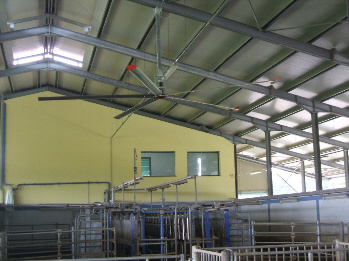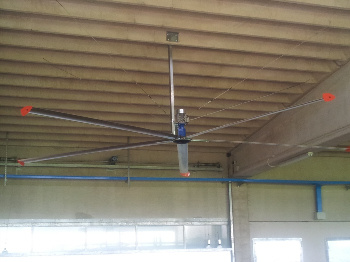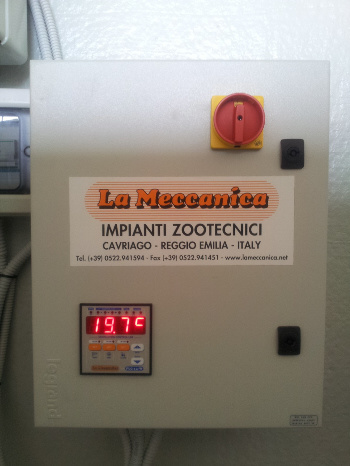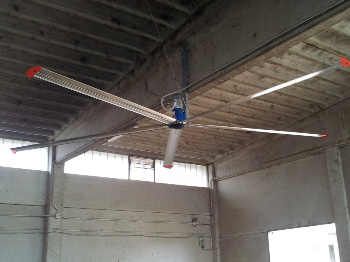“HELICOPTER” DESTRATIFIER
Project Details
The Destratifiers, also known as HVLS (High Volume Low Speed fans), move large volumes of air from up to down and implement a process of replacement, mixing and redistribution of air within the environment in which they operate.
The low speed of rotation of the blades produces a gentle and uniform breeze that lowers the temperature perceived in the stable and increases the animals welfare.
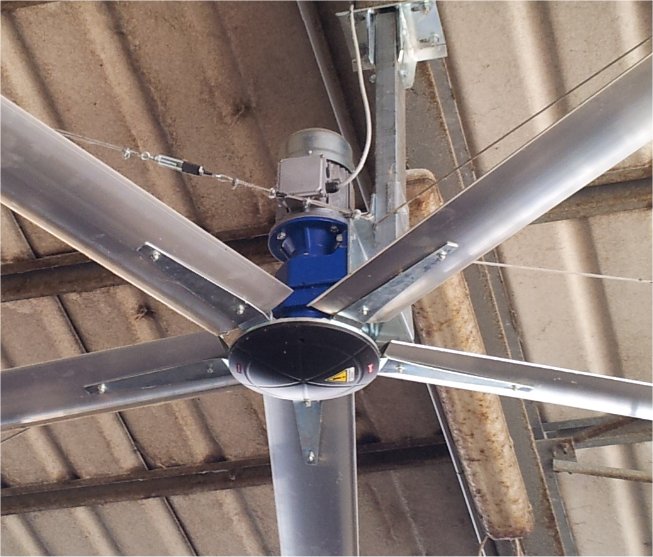
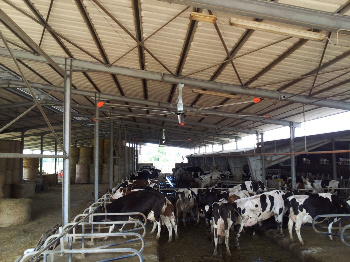
- The continuous and uniform air flow leads animals not to group together.
- The decrease of the heat stress on the animals prevents loss of milk production.
- The slight movement of the air mass produced eliminates condensation and helps keeping bedding and berths dry. It increases comfort for the animals and reduces the microbial load.
- Compared to traditional systems, the power consumption is drastically reduced as well as operating costs.
- The noise level is very low and it does not create airstreams or air swirls which could be harmful to animals.
- Large spinning turbines frighten the birds and the movement of air moves away the flies
The “Helicopter” units are equipped with 5 anodized aluminium blades with 22 cm wing carrier surface. The three-phase motors have 0.75 Kw (1 Hp) power for 11′ (3.30 m), 12′ (3.60 m), 14 ‘(4.30 m) and 15’ (4.70 m.)models. And 1.1 Kw (1.5 Hp) for the 21′ (6.30 m.) model and 1.5 Kw (2 Hp) for the 23’ (6.90 m.) model. The motors are designed and built for use at variable speeds.
Gearboxes are of Italian design and manufacture, maintenance free, with angular contact bearings and coupling joint to the motor to optimize the transmission of power.
The hub that connects the gearbox to the rotor is provided with a security system that prevents accidental separation of the rotor.
The blades are equipped with winglets, which increase the efficiency of the fan. The airflow generated by “Helicopter”, at maximum speed, varies from 160,000 m³/ h for 11′ to 400,000 m³/h for 23′.
The speed control can be implemented by automatic systems with temperature sensing. In this case, the software allows the operator to change the default values to suit the needs. An additional module allows to integrate ventilation with a large drop cooling system located on the rack.
Also manual speed control with inverter is possible.
